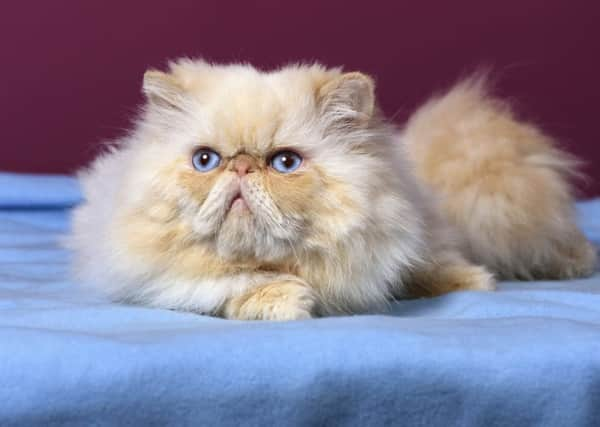Cats with flat faces '˜more likely to have breathing problems'


Researchers at the University of Edinburgh found that breeds with flat faces such as the Persian and the Exotic are more likely to have breathing problems after exercise and while asleep.
Facial features such as short noses are considered desirable for some pedigree breeds of cat, but they may be linked to health risks. The difficulties have been well-reported in dogs but the incidence of breathing problems in flat-faced cats had not previously been fully investigated.
Advertisement
Hide AdAdvertisement
Hide AdResearchers analysed photographs submitted by cat owners around the world to measure the faces of hundreds of animals. Owners also completed a detailed health survey about their pets, including questions about the animals’ lifestyle and breathing patterns.
The team found that flat-faced cat breeds were more likely to suffer breathing problems.
Professor Danielle Gunn-Moore, of the University of Edinburgh’s Royal (Dick) School of Veterinary Studies, warned owners to seek veterinary care if they suspect their pet is having difficulties.
She said: “This study demonstrates the need to further understand the genetic basis of brachycephalia in cats.
“Owners worried about their cats’ breathing should consult a vet immediately.”
Impaired breathing is a hallmark of a condition called Brachycephalic Obstructive Airway Syndrome, which can lead to life-long health problems. The condition occurs as a result of abnormalities in the shape of the animal’s mouth and nose, which prevents normal breathing.
Dogs with the same condition also have problems with their skin and tear ducts and can experience stomach trouble.
The research team’s findings were published in the journal PLOS One.
Advertisement
Hide AdAdvertisement
Hide AdNot all Persian cats have flat faces – the traditional, or doll-faced Persian, has a muzzle. In the 1950s, some cat fanciers decided a spontaneous mutation was a desirable trait, and began breeding Persians to have shorter and shorter muzzles until they had high noses and flat faces.
The Persian originated in Mesopotamia, which was later known as Persia and is now modern-day Iran.
